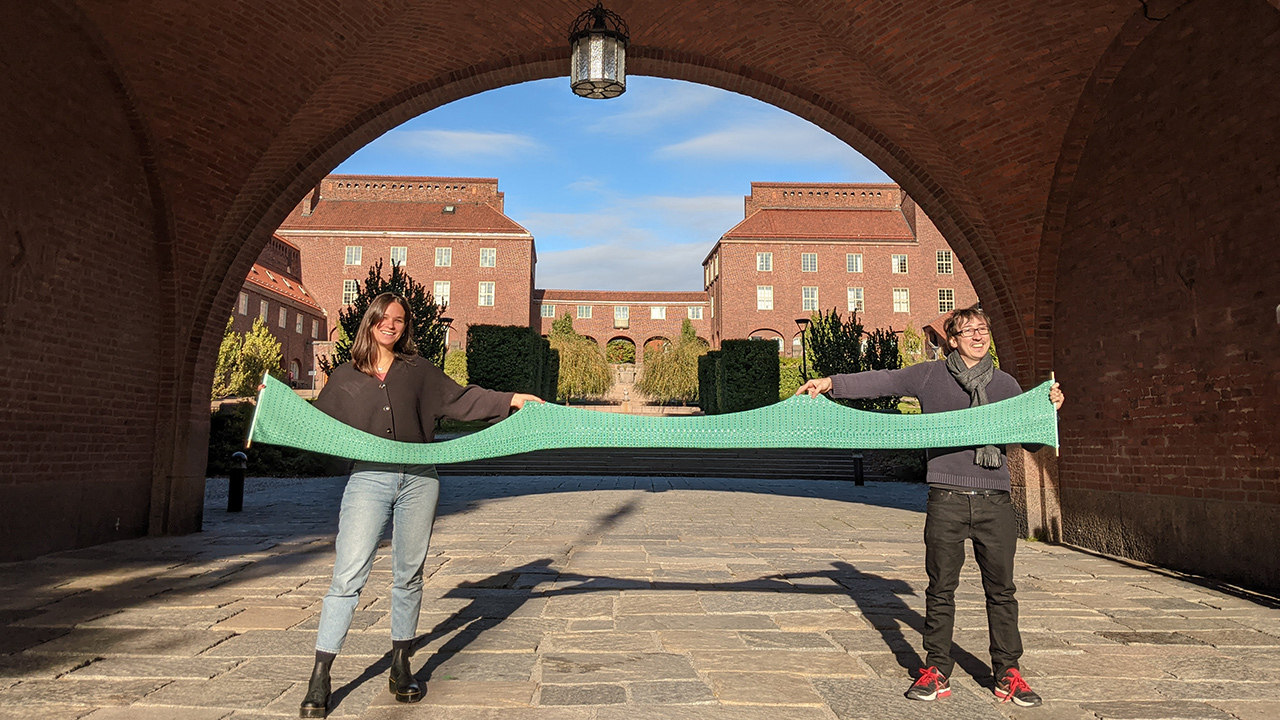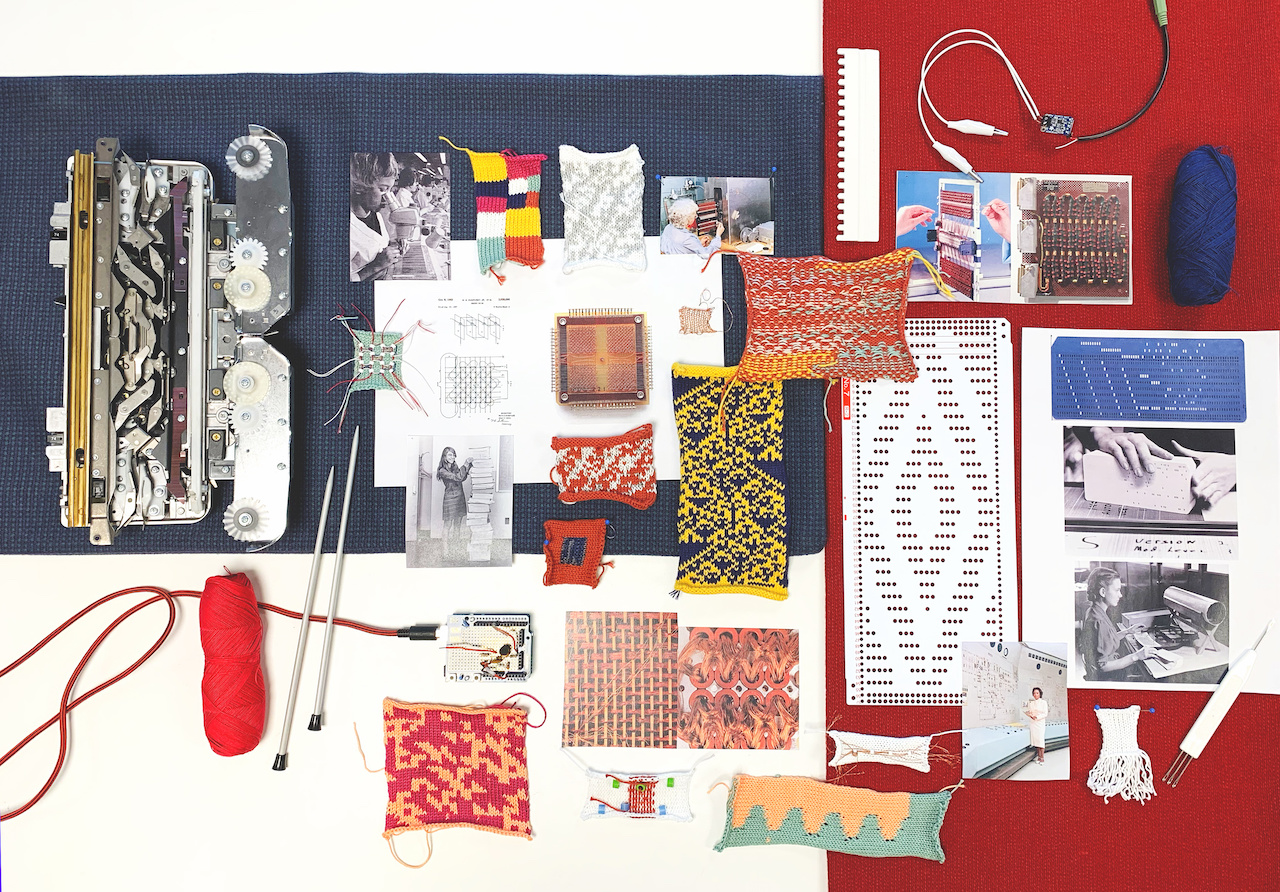Software and textile art with Nadia Campo Woytuk

Hi Nadia Campo Woytuk, research engineer at the Division of Media technology and interaction design!
Your project “Softwear” is exhibited at the KTH Library at the moment, for someone who hasn’t had the opportunity to visit the exhibition, how would you describe it, and the pieces on display?
“The exhibition is a small showcase of the explorations I've been doing for the past few months. There are three main pieces on display, each one accompanied by the code that helped create the knitted patterns. ‘Ada's Sol’ is the main piece, a tribute to Ada Lovelace, the first computer programmer. She designed an algorithm for one of the first computers, the Analytical Engine, which my colleague Nicolas Harrand and I translated into a knitted pattern. This is the largest piece, it took me about eight hours to knit. What I love about ‘Ada's Sol’ is that you can step away from it or look at it up close and your perception of the pattern changes.
Another piece is based on an algorithm called "cellular automata", and exhibited next to it is a long roll of code which represents the communication between the knitting software and the knitting machine. With this piece I intended to reflect on the different stages and layers between human, software and machine.
The final piece is an exploration of randomness and symmetry through several knitted swatches, on display next to a small screen which generates new random patterns every few seconds. Next to this, I also included a physical collage of swatches, photos, threads, and punch cards to show snippets of the artistic process and to contextualise the work.”
How come you choose to work with knitting as a medium?
“I've been knitting on and off my whole life, so it was a somewhat familiar medium to me, but I had never tried using a knitting machine. We had recently bought a knitting machine for our design makerspace, Middla, and I was lucky enough to be one of the people who unpacked it and learned how it worked. As I started exploring the machine I became very inspired by many research and art projects which shed light on the shared history of textiles and computing, so I decided to focus on that. I have always been jumping between the two fields of art and technology, and this intersection felt just perfect.”
Unfortunately you had to cancel a related knitting workshop due to the new COVID-19 restrictions at Campus, what was it supposed to be about?
“The workshop was going to be about knitting binary code. I wanted to bring together people with different knitting skills and computer science skills and have conversations about this shared history, by learning how to knit, learning binary code, and then knitting 'secret' messages into our knitting by using binary code. I made a little tool to translate a message into binary and then into a knitting pattern . I hope to be able to organize the workshop in the future!”
Where will you go from here, will you continue your exploration of software and textile?
“I will definitely continue this work, perhaps shifting focus to how these explorations can be used in interaction design, rather than, specifically, the intersections with software systems. One thing I would like to expand on is the prototype of a knitted speaker, which creates a very interesting and intimate interaction with textiles: since the speaker is very low you have to press your ear to the fabric. I'd love to build on this work and I am hoping to continue it during doctoral studies where I can use my knitting skills, among other crafting approaches, to design technologies that are close to the body.”

